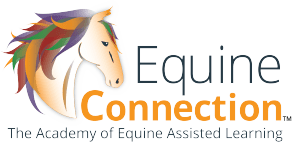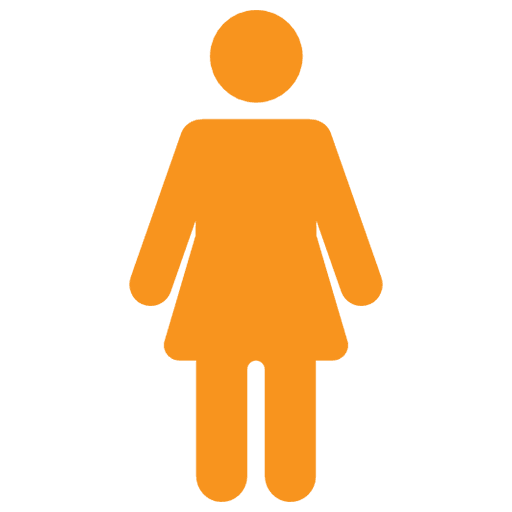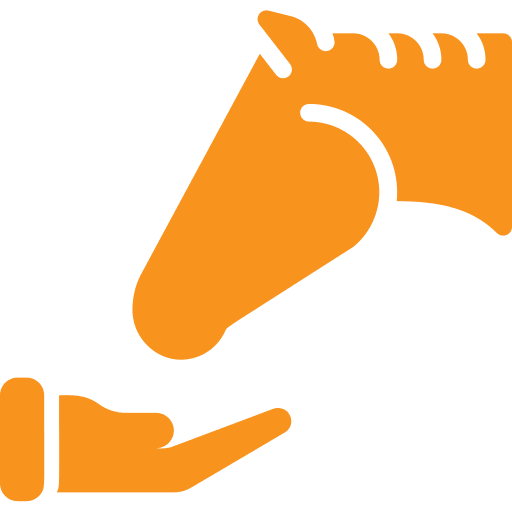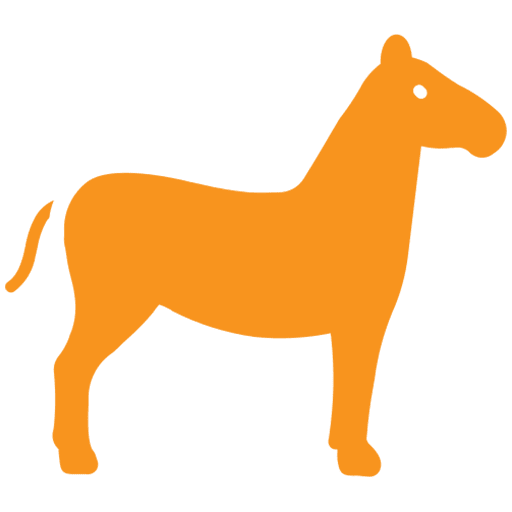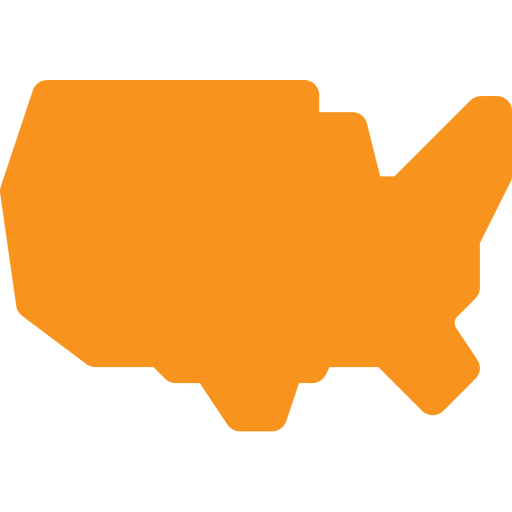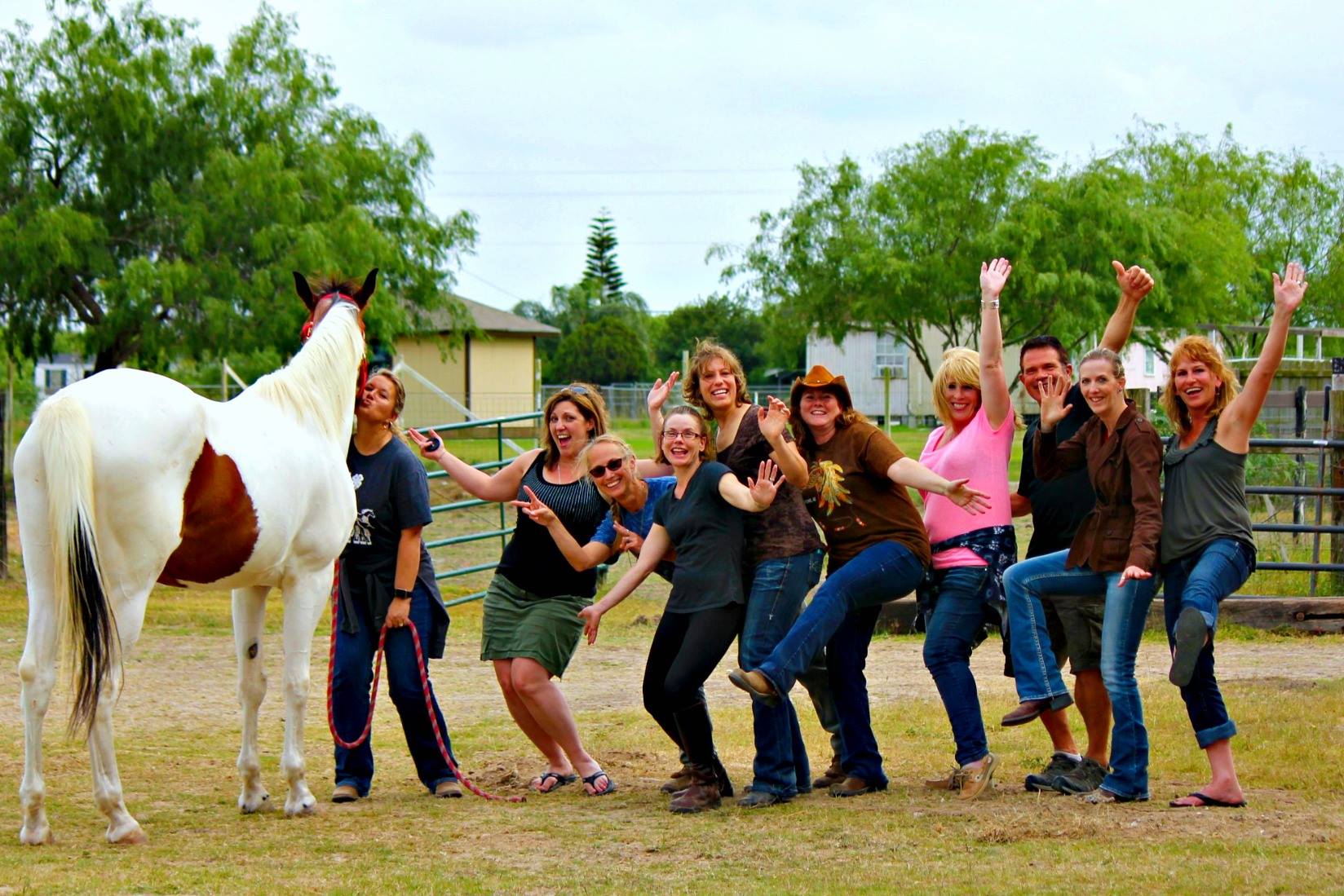Join Equine Connection's FREE "Email Newsletter" Made For Horse Lovers & Equine Business Alike….
What is EAL? PART ONE
Welcome! Today we're going back to basics a little bit. We will be talking about:
- What is Equine Assisted Learning? When did it first take place?
- What's it all about?
- Why do we do what we do?
- What is this healing with horses thing?
That's what we're going to be discussing today.
It's really interesting because it was over 15 years ago when I started. When I began looking into Equine Assisted Learning, nobody knew what it was. It was just coming into being. It had been around for, I think a couple of years before. But nobody understood it. It was really tough to explain how we help people and how we help clients by working alongside horses.
When you can do something good and help someone and you read what their horse taught them at the end, it's mind blowing. Every day it is still mind blowing.
It’s not about us people making the most money that we possibly can, that is not our main goal. Money doesn't bring joy into our lives. It’s the satisfaction of knowing another person’s life is better because of what we do.
Yes, it’s nice to have money, being comfortable is a good way to live. It's nice to be involved with horses. We all know how expensive these magnificent creatures are. But it's beautiful when you can bring it into a business because then all of that money you're already spending just goes into those write offs, those government tax write offs, those expenses, and you get to carry any losses forward.
You know because if you think about it, if you add up how much we spend on a horse a year, that would be a loss if we didn't have a business. So bringing the business and the horses together becomes a more comfortable expense, plus these beautiful programs allow you to reflect when you get home after work on how you have benefited the world.
Now that you're in a business, it's a write off. And that's the exciting part because our governments work with us, for those who want to be self-employed. It’s funny though, because how many people think that you're rich because you have a horse? We may not be rich but our lives are rich with experiences not only from our horses but our clients too. I knew I would always have horses around for my daughters. I found when we work with horses what they do for us as a human, is they help us be able to move forward. They’re stunning presence and they're non- judgmental attitude plus they don't lie makes them phenomenal.
For myself to find a business like this and to be able to write things off. Plus, feel the graciousness of these equines that are helping not only our clients' lives but also ours. Well, holy jumping tuna fish, I’d hit the mother load!
Okay, so what the heck is Equine Assisted Learning?
Think of it this way. The horse literally is assisting in the learning. We know that the number one thing for horses is to feel safe. When we achieve a feeling of safety for our horse, our horse then becomes a partner. Without knowing it we have accomplished communication and team building. Just by helping our horse feel safe.
What we have discovered (or our clients) is that despite communication and cultural blocks, through tone and body language we have adapted to a new situation. Hence we have learned new skills that can be carried away with us to be used in the future in similar situations.
Because a horse cannot think like a human, we cannot treat our equine like we would others. Suddenly, we’re in a situation where what we know is no longer relevant. The environment we’re in is not one we’re used to. Thoughts of “does the horse like me?” Or “What does the horse think of me?” Do not apply.
This calls for critical thinking, thinking outside of the box because this skill set isn’t in our realm. All human behaviour, societal structure, “what is expected of me?” Are thrown out of the window because the new circumstance cannot be responded to in a regular human fashion.
Even for the horse person who knows horses and believes they understand horses is now in a different environment that they’ve never experienced. This experiential learning is what becomes retained as a form of soft developmental skills. Which surprisingly are easily placed into the human environment as a further set of skills.
We go into the EAL horse world to be able to understand them and practice exercises that they join us in, whilst helping us achieve clarity. So, it's literally when we are working on the exercises that are already pre-designed, and always have a beginning, a middle and an end, leading to a result. That we gain a predictable outcome which allows us to parallel and allows the clients to parallel how they can bring it into their own lives. That's the power of Equine Assisted Learning.
So when our horse is not feeling safe, for example. We as trained facilitators have the ability to take a step-in and say:-
What do you think?
What is your horse trying to tell us right now?
Why is he reacting this way?
This gives the client the ability to recognize and, we always come back to the number one thing, which is that the client needs to feel he’s going to tell us is safe.
So what does our client need from us right now in order to be able to move forward or back up or whatever it is he’s doing in the arena? He needs to figure this out. If he struggles we guide him through questions to help him think laterally from where he’s already at. Just like a word has synonyms, our client needs to go through the process of finding the word that fits the situation. Once the epiphany occurs our client moves on confidently with his partner, teacher, the horse.
Doing these fun programs that are already predesigned, they show us we should look at things from their aspect, for what it logistically looks like when people are attending an art form of Equine Assisted Learning programs. Essentially, we have the arena set up with a bunch of obstacles that have something to do with an objective for that particular day. Our facilitation also would have something to do with that same objective for that day. Our clients are working on the ground. There is no riding the teachers (horses). The teachers and the client or clients are in a team or teams.
It's usually two people plus a horse as they go through the obstacles together. Now, depending on if it's the objective of e.g. communication that day, i.e. that's our goal that we're going to hit and we know we're going to hit it. We're also going to take that piece and parallel it back to how they are going to use the skill in everyday life. However, as they're going through an obstacle they might find, perhaps they're not communicating, and all of a sudden some frustrations are happening or people are confused.
Our clients aren't saying it. We don’t know what they’re thinking. In fact we’re not looking at the people, we’re looking at the teacher (horse). This is where the horse is now going to respond. And, that's when our horse does something, the head goes up, there's a swish of the tail, there's something going on with their horse that we as facilitators notice. Now, we can walk-in and draw the clients attention to the horse.
Remember, there is no right or wrong here. We’re not going to point out mistakes. We’re going in to ask about the horse. This immediately relaxes the clients as they become concerned for the animals welfare. When we start asking the questions we are able to get people to understand what might be happening in their communication or not happening in their communication. They make the adjustment, see the change in the horse, and then move forward more confidently with another “aha” moment under their belt.
Stay tuned for Part Two! Or you can listen to the entire podcast below!
JOIN EQUINE CONNECTION'S FREE Email Newsletter
MADE FOR HORSE LOVERS & EQUINE BUSINESSES ALIKE….
Join our community of 118,000+ Life Changers forging their own paths with horses - whether for business or pleasure.
You'll Receive Weekly Emails Designed to Transform Your Relationship With Your Horse, Elevate Your Equine Business & So Much More!
